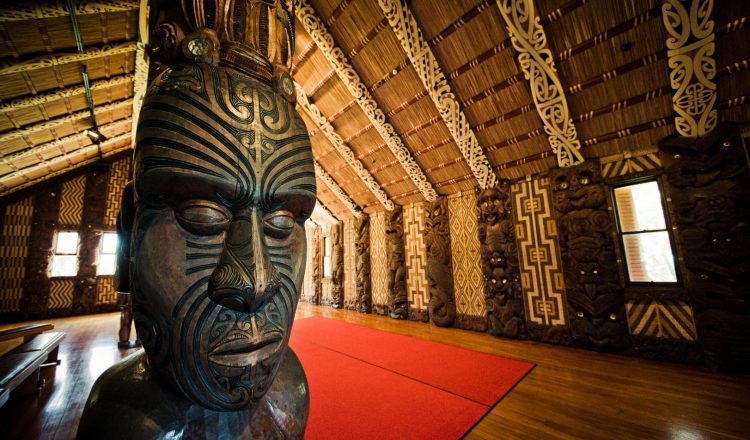Nghi thức Kiwi
Với việc New Zealand là một quốc đảo nhỏ bé và là cái nôi của một số nền văn hóa khác nhau, bạn có thể thắc mắc về các phép xã giao của người Kiwi. Cách cư xử và chuẩn mực xã hội của họ có phản ánh di sản châu Âu của New Zealand hay mức độ bình đẳng ngày càng tăng giữa các nền văn hóa trên đảo đã tạo ra tác động?
Câu trả lời, như bạn có thể mong đợi với New Zealand, là một sự kết hợp của cả hai.
Thân thiện và chào đón
Với quy mô của New Zealand và dân số tương đối nhỏ, việc chào hỏi người lạ trên đường phố là điều phổ biến, thường là bằng một nụ cười và một cái gật đầu. Mỉm cười với những người trên đường phố có vẻ xa lạ đối với một số người, vì các nền văn hóa khác nhau cố gắng cúi đầu và tránh giao tiếp bằng mắt bằng mọi giá, nhưng đây không phải là cách của Kiwi. Có ý thức cộng đồng mạnh mẽ, người New Zealand được biết đến với sự thân thiện cởi mở và thái độ chào đón người lạ.
Cùng với điều này, Kiwis có xu hướng tin tưởng vào các cá nhân. Với một đất nước an toàn và hạnh phúc như New Zealand, không có gì phải nghi ngờ người khác. Một ví dụ tuyệt vời về điều này là ‘hộp trung thực’, thường để lại trên đường phố và lề đường. Chúng có thể chứa nhiều thứ khác nhau, chẳng hạn như trái cây, rau và hoa tự trồng. Các hộp được đánh dấu bằng một mức giá và không có nhà cung cấp hoặc chủ cửa hàng xung quanh, họ tin tưởng người mua phải trả số tiền quy định và lấy những gì họ muốn.
Tôn trọng Văn hóa Maori
Với một thái độ cởi mở, dễ dàng, nó được biết là tương đối đơn giản để hòa nhập với người Kiwi; miễn là bạn có một chút ý thức chung và cách cư xử cơ bản.Yêu cầu về phép xã giao thực sự duy nhất ở New Zealand là bạn phải đối xử với người Maori và phong tục của họ một cách tôn trọng. Người Maori có nhiều nơi thiêng liêng rải rác khắp đất nước, và bạn phải xin phép một người lớn tuổi nếu bạn muốn đến thăm hoặc được tiếp cận. Giả sử bạn được phép đến thăm một marae (sân họp Maori) hoặc wharenui (Nhà họp), trong trường hợp đó, có những quy tắc cụ thể mà bạn nên tuân theo. Chúng bao gồm cởi giày của bạn trước khi vào bên trong (Một thực hành phổ biến ở hầu hết New Zealand). Các quy tắc khác nhau giữa các marae khác nhau, vì vậy hãy hỏi xung quanh và tìm hiểu những gì người dân địa phương mong đợi ở bạn.
Mặc dù việc cởi giày của bạn khi vào nhà thường là điều bắt buộc, bạn có thể nhận thấy rằng kiwis đôi khi đi chân trần ngoài trời. Xuất thân từ một môi trường khắc nghiệt như vậy, đặc biệt là ở các vùng nông thôn, các quy tắc ăn mặc ở New Zealand có xu hướng rất chỉnh tề. Điều này bao gồm việc bỏ giày để cảm nhận cỏ giữa các ngón chân của bạn!
Cư xử và Chia sẻ như nhau
Một phần quan trọng khác của nghi thức xã hội Kiwi và cách cư xử là chia sẻ. Người New Zealand đã rất tự hào về khả năng chia sẻ văn hóa và những nền văn hóa của nhau, nhưng nó không chỉ dừng lại ở đó. Bạn bè thường chia sẻ thức ăn, và đồ uống thường được mua trong vòng để mọi người đóng góp. Kiwis có thể coi thực hành này là “hét lên” của bạn, nhưng không cần phải hét lên, chỉ cần mua đồ uống cho nhóm của bạn tại quán rượu hoặc quán bar! Kiwis không phải là người keo kiệt, vì vậy sẽ đánh giá cao nỗ lực để chia sẻ.

















































